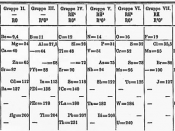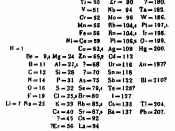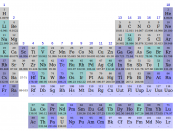Alexandre Beguyer de Chancourtois (1820-1886)
oIn 1863, a 44 year old French geologist, he created a list of the elements arranged by increasing atomic weight. The list was wrapped around a cylinder so that several sets of similar elements lined up, creating the first geometric representation of the periodic law.
oIn 1862 was the first person to make use of atomic weights to reveal periodicity (i.e. when the elements were arranged according to their atomic weights, similar elements seemed to occur at regular intervals.) He drew the elements as a continuous spiral around a cylinder divided into 16 parts. The atomic weight of oxygen was taken as 16 and used as the standard against which all others were compared. Chancourtois noticed that certain of the triads appeared below one another in his spiral. In particular the tetrad oxygen, sulfur, selenium and tellurium fell together, and he called his device the "telluric helix".
The atomic weights of these elements are 16,32,79 and 128, respectively, and quite fortuitously they are multiples or near multiples, of 16. Other parts of the screw were less successful. Thus boron and aluminium come together all right but are then followed by nickel, arsenic, lanthanum and palladium. Chancourtois had discovered periodicity, but had got the frequency wrong.
oIf a periodic table is regarded as an ordering of the chemical elements demonstrating the periodicity of chemical and physical properties, credit for the first periodic table (published in 1862) probably should be given to a French geologist, A.E.Beguyer de Chancourtois. De Chancourtois transcribed a list of the elements positioned on a cylinder in terms of increasing atomic weight. When the cylinder was constructed so that 16 mass units could be written on the cylinder per turn, closely related elements were lined up...



Duplicate submission
I've already ready this.
14 out of 19 people found this comment useful.